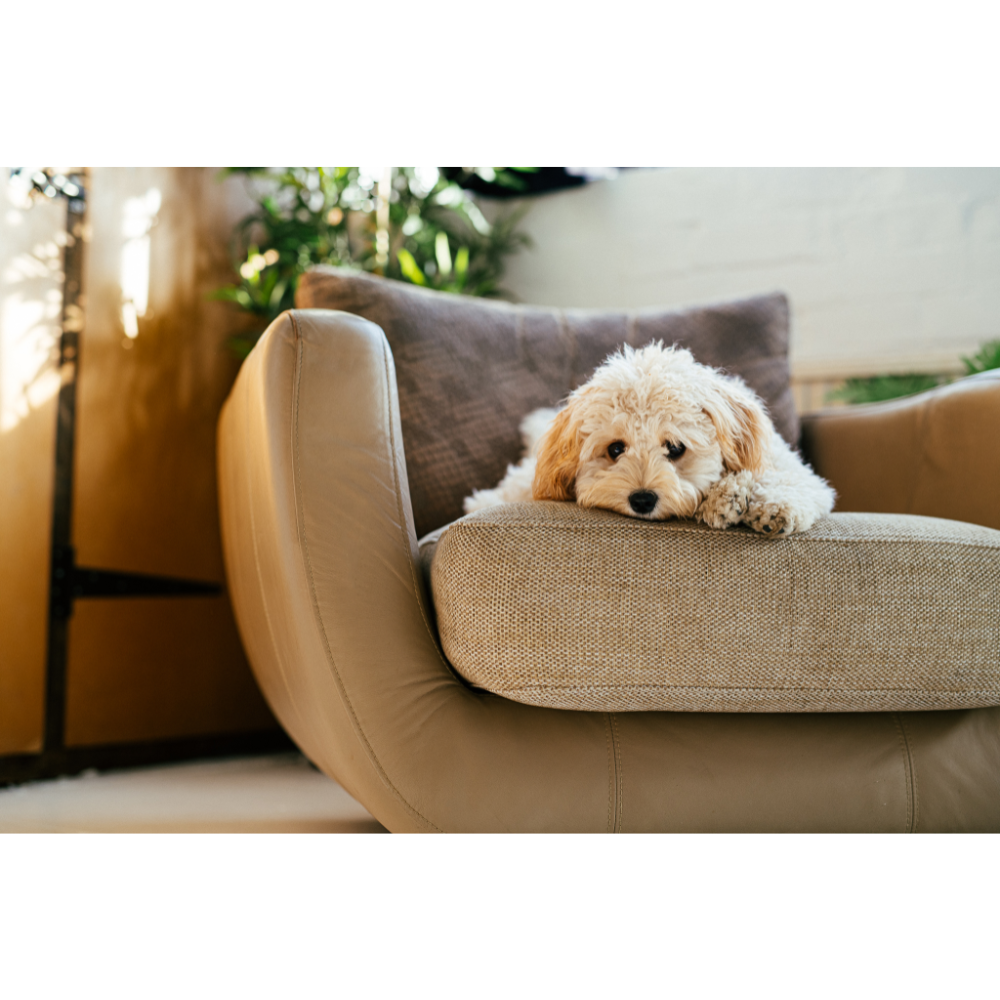Have you noticed confusing behaviour from your dog? Perhaps one moment they’re growling at you and acting like they don’t want to be near you and the next they’re licking your face or rolling over for a belly rub.
Sometimes dog behaviour can be really confusing.
Here’s why you might be seeing confusing behaviour from your dog…
Dogs can experience conflicted feelings, emotions and internal states. This means that on one hand they may be experiencing a negative emotional state and be feeling anxious, worried, stressed, tired, frustrated, or in discomfort. But, on the other hand, they may love an opportunity for social contact, or be experiencing another positive emotional state.
The two emotions, feelings or internal states can conflict with one another and this can cause your dog to behave in a confusing way.
An example of internal conflict causing confusing behaviour in your dog…
A common example is when dogs feel tired. They may act as if they don’t want to be near you on one hand, for example by growling, but if you give them some attention they’ll instantly be by your side acting like they’re ready for a fuss. The tiredness may be battling with a love of social contact.
Appeasement behaviour can also be common in these situations. This is when your dog wants to show you that they mean peace and they’re not a threat. The purpose of this behaviour is to de-escalate any tension arising from your response to their confusing behaviour. This could manifest as your dog licking you frantically, or rolling over onto their belly on approach as if they want a belly rub. It’s unlikely they want a belly rub instead, they just want to show you they mean peace.
Here, the tiredness is conflicting with a desire for social contact, or perhaps a worry about potential consequences if they don’t show you they aren’t a threat.
Here’s another one…
Internal conflict can also occur if your dog is worn out, or in discomfort on a walk. They might be feeling discomfort internally, but if your dog really enjoys their walks, running around with other dogs, playing, or chasing a ball the motivation for this activity might out way discomfort or painful niggles. They might choose to continue the loved activity due to feelings of pleasure and forget about any tiredness or discomfort.
The tiredness or discomfort may then manifest in wanting space, or to be left alone afterwards when the dog is home and in a calmer internal state.
Or, they might start to notice painful niggles or feelings of discomfort in specific locations and begin to associate these locations with the uncomfortable feeling. They may start to randomly stop in unusual places or start to refuse to do something they’re usually fine with.
The dog may be aware of uncomfortable feelings initially. But, this awareness may disappear if a situation is exciting enough, or they have a motivation to escape a situation (the fight or flight response). This can often lead to confusing behaviour.
Oh and another common example…
Another example is if your dog is wary or nervous of strangers and the stranger feeds them treats. Your dog on the one hand will be feeling worried, anxious, uncertain, or threatened by the stranger, but on the other hand, they may want the food. An internal conflict.
Food is essential for survival, so there is likely to be some degree of motivation to get it. However, if your dog is feeling stressed by the situation they may ignore or refuse the food.
In other scenarios, your dog may take the food, but may still be worried by the situation. They might take the food and quickly retreat, or take the food and then show aggression. The overall situation is one of confusion and uncertainty for the dog. This means it might not have the desired result of showing the dog that the stranger means good things.
Conflict can crop up in many different situations with dogs and can lead to confusing behaviour.
We want to help our dogs with internal conflict by setting them up for success whereever possible.
Listen to my explanation here:
Follow me on social media:

